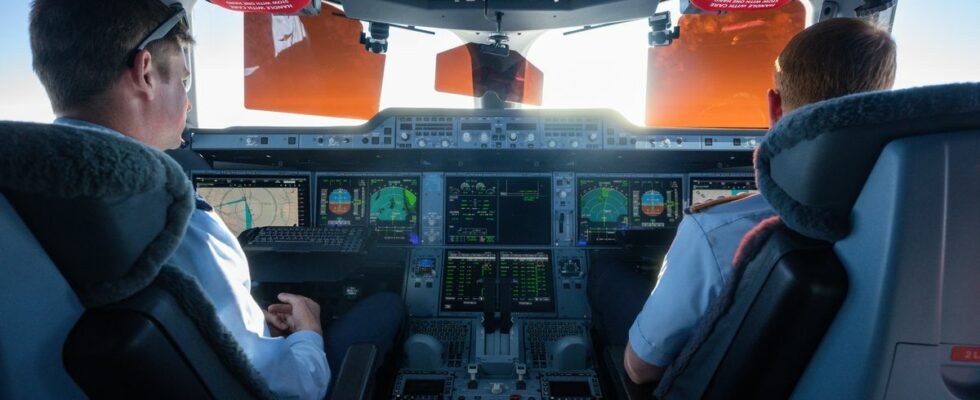Sensors are used for 360° vision. ©Airbus
Like car manufacturers, Airbus continues to innovate in flight automation. The aircraft manufacturer’s subsidiary dedicated to innovation, Airbus UpNext, has just tested its new DragonFly system on an A350-1000. The tool should make it possible to carry out complex piloting operations autonomously, to ensure flight safety or maximize the efficiency of certain operations.
A tool inspired by the dragonfly
Specifically, DragonFly’s technologies allow “automated emergency diversion in cruise”, “automatic landing” or “rolling assistance”. As its name suggests, the Airbus UpNext demonstrator is inspired by the vision and intelligent flight of dragonflies. Indeed, having a 360° vision, the insect is able to identify certain particular points in an image to guide its flight path. “The systems we are developing and testing are similarly designed to examine and identify landscape features that allow the aircraft to ‘see’ and maneuver safely in its environment”explain the experts.
Airbus uses computer vision algorithms. © Capture Airbus
The automation developed by the aircraft manufacturer should eventually make it possible to secure in-flight emergency operations. If the pilots are unable to drive the aircraft, DragonFly could take over, in part, to direct the aircraft to an emergency airport and facilitate landing operations.
First conclusive tests
To operate, the system will take into account its environment and adapt its route accordingly, like a dragonfly. In addition, the safety of the approach (phase before landing) will be secured by establishing a “constant channel of communication between the aircraft and air traffic control as well as the airline’s operations control center”. DragonFly technology is based on a system combining multiple sensors and “computer vision algorithms”all added to “robust guidance calculations”.
The latest flight test campaign of the system seems convincing for the time being. Similarly, taxiing assistance (movement of the aircraft on the runway) was successfully tested on the tarmac at Toulouse-Blagnac airport. In the future, Airbus UpNext intends to further improve its tool by developing new, even more efficient computer vision algorithms.
“These tests are one of many steps in the methodical search for technologies to further improve operations and safety”said Isabelle Lacaze, head of Airbus UpNext’s DragonFly demonstrator.
A system inspired by biomimicry which therefore seems very promising.

